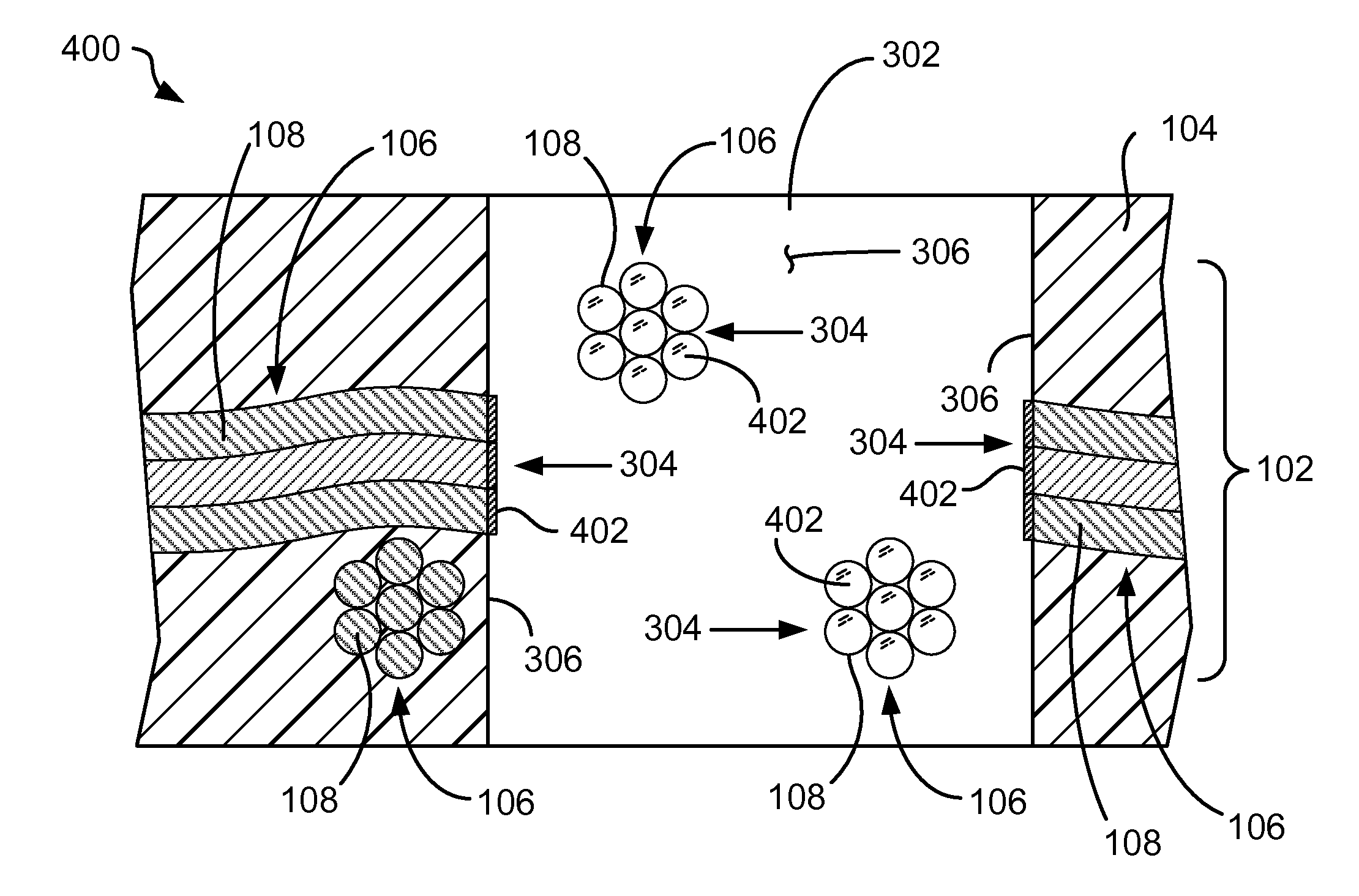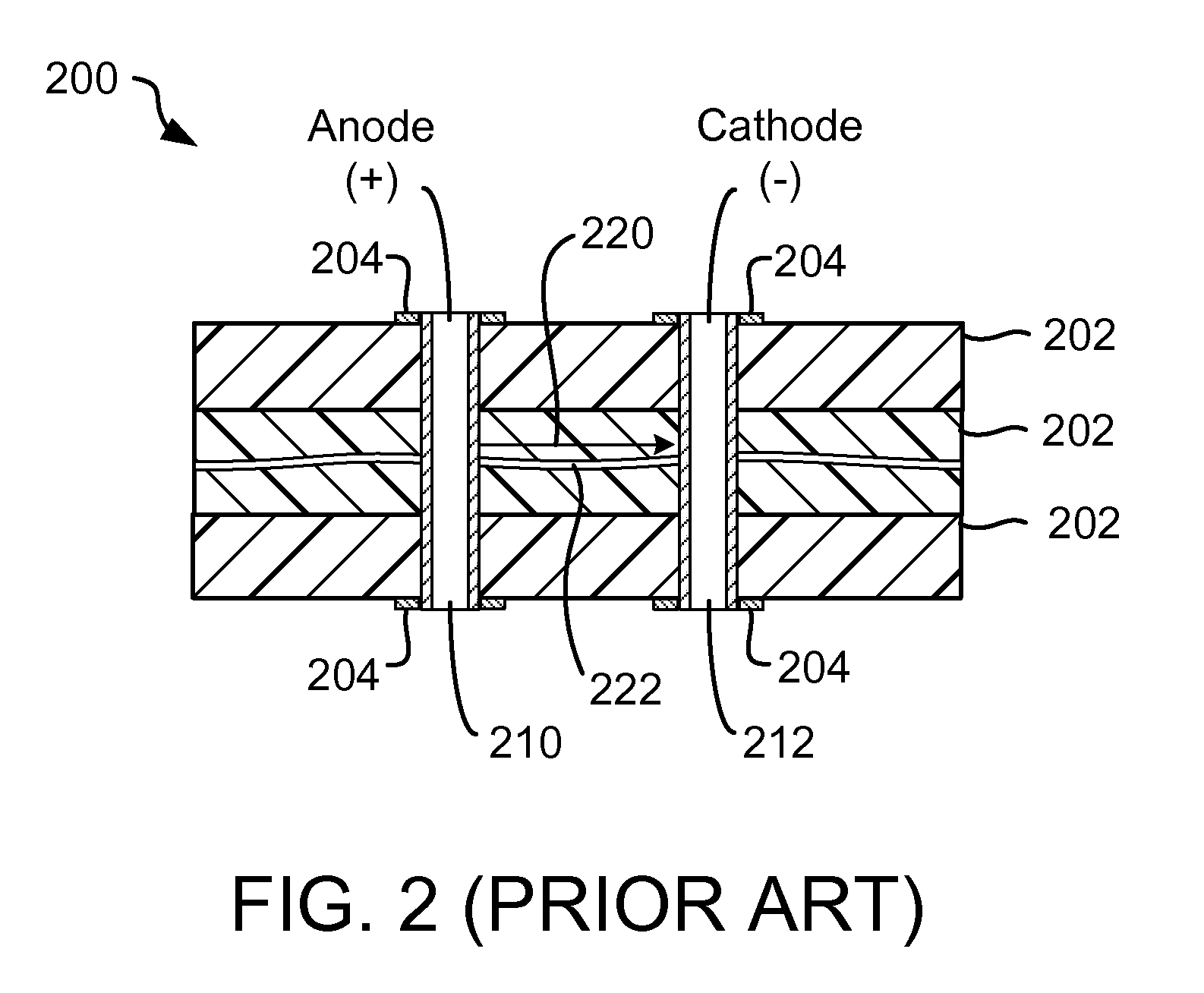Preventing conductive anodic filament (CAF) formation by sealing discontinuities in glass fiber bundles
a technology of discontinuities and glass fiber bundles, which is applied in the direction of resistive material coating, chemical vapor deposition coating, non-metallic protective coating application, etc., can solve the problems of conductive anodic filament (caf) growth and catastrophic failure of pcbs, and achieve the effect of effectively sealing glass fiber bundles and eliminating the conductive anodic filament (caf) pathway
- Summary
- Abstract
- Description
- Claims
- Application Information
AI Technical Summary
Benefits of technology
Problems solved by technology
Method used
Image
Examples
Embodiment Construction
[0015]In accordance with the preferred embodiments of the present invention, an enhanced substrate for making a printed circuit board (PCB) includes a silane applied to the ends of glass fibers in via holes. In one embodiment, during a plated through-hole (PTH) via fabrication process, glass fiber bundles exposed in a drilled through-hole are selectively sealed. For example, after the through-hole is drilled in a substrate, the substrate may be subjected to an aqueous silane bath (e.g., an organo trialkoxysilane in an aqueous solution of an acid that acts as a catalyst) to deposit a layer of silane on the exposed glass fiber bundle ends. Immersion process parameters (e.g., temperature, pH, silane concentration, and immersion time) are adjusted to deposit a suitable layer of silane. For example, trialkoxy groups of the silane may react with exposed silanols on the glass to form a siloxane, which is further polymerized to form a silane polymer barrier layer on the exposed glass fiber ...
PUM
| Property | Measurement | Unit |
|---|---|---|
| immersion time | aaaaa | aaaaa |
| temperature | aaaaa | aaaaa |
| voltage | aaaaa | aaaaa |
Abstract
Description
Claims
Application Information
 Login to View More
Login to View More - R&D
- Intellectual Property
- Life Sciences
- Materials
- Tech Scout
- Unparalleled Data Quality
- Higher Quality Content
- 60% Fewer Hallucinations
Browse by: Latest US Patents, China's latest patents, Technical Efficacy Thesaurus, Application Domain, Technology Topic, Popular Technical Reports.
© 2025 PatSnap. All rights reserved.Legal|Privacy policy|Modern Slavery Act Transparency Statement|Sitemap|About US| Contact US: help@patsnap.com



